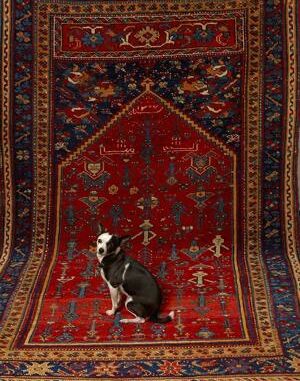
The more I learn about Oriental rugs, the more baffled I become. In my experience, choosing one is the single most difficult home design decision one can make. That’s because so many factors need to click: material, pattern, scale, quality, motif, size, colors, and wiliest of all, cost. How do you know if the seller is pulling the carpet wool over your eyes?
Yet, a well-placed Oriental rug, that is hand-knotted from Asia, can be the soul of a room. Which is why many designers suggest that, when decorating a room, you start with the rug. Of course, that’s fantasyland. In the real world, rugs come last. “That’s a beautiful rug, honey, but what are we going to sleep on?”
I have several of these rugs, which I’ve collected over the years, and would not part with, but recently I learned they’re not from where I thought they were.
The things you can learn in an Uber
Doubts surfaced while I was in an Uber. I got to talking with the Uber driver, that trustworthy of all sources, who was from Iran, where he worked in the rug trade. Naturally, I started asking questions like why is there so much distrust, price haggling, lying, and fraud in his business?
I showed him a picture of a runner in my entryway.
“Made in India,” he said, “in the Mamluk tradition, very common.”
“The guy who sold it to me was from Turkey, and implied it was from Turkey.”
“Well, it might have come from Turkey, but it was made in India.”
This seemed far-fetched enough to be true.
The explanation
For clarification, I called Robert Mann, owner of Robert Mann Rugs, in Denver, one of the foremost rug authorities in the country. “The industry is not transparent,” he said.
Mann has worked in the rug industry for 45 years. He has made, repaired, sold, cleaned, and appraised rugs. Today, he runs a large rug cleaning and repair facility.
Yes, he explained, Turkey was once a major producer of rugs. But as the country got richer around 1990, fewer women wanted to spend their days weaving. Production plummeted. “Around that time, the country lifted its ban on importing foreign hand-woven rugs,” he said. “As a result, Turkey became full of rugs that weren’t Turkish.”

Leave a Reply